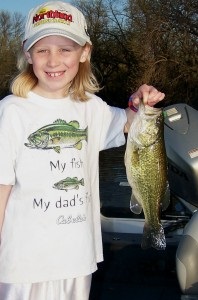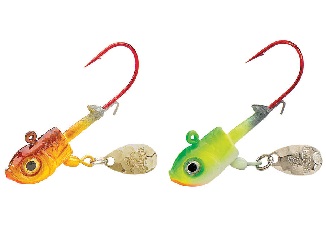 It’s no secret that jigs catch fish of all species during all seasons. An ordinary round or “ball-head” jig is probably the jig style that comes to mind most often when anglers refer to jigs or jig fishing.. While ball-head jigs do catch fish, in some situations another jig style is a better fish-catching tool. Here is a look at some of those instances when trading a ball-head jig for more of a specialty jig can increase an angler’s catch.
It’s no secret that jigs catch fish of all species during all seasons. An ordinary round or “ball-head” jig is probably the jig style that comes to mind most often when anglers refer to jigs or jig fishing.. While ball-head jigs do catch fish, in some situations another jig style is a better fish-catching tool. Here is a look at some of those instances when trading a ball-head jig for more of a specialty jig can increase an angler’s catch.
When vertical jigging for walleyes with jigs tipped with live bait, a round head jig usually works good. However, at times when walleyes are found in shallower water, anglers may choose to cast or what is often called pitch jigs to those fish. Pitching works for shallow fish that may be spooked by the presence of a boat overhead.
While a ball-head jig will work for pitching, a stand-up jig head with a plastic body may be a better choice. This style jig can be fished slowly to imitate a minnow feeding on bottom utilizing a casting approach. The new Lip-Stick Jig has a stand-up head and a minnow imitating tube tail and has really been a good walleye producer for me this year when pitching to the shallows.
Successful walleye fishing sometimes requires the use of a jig style other than the normal round-head jig. In addition, bass and panfish anglers can also use specialty jigs to up their catches at times. For instance, when bass bury themselves in heavy cover like weeds or timber a jig that can present a plastic worm, grub or soft stick-bait in a weedless manner is a good choice.
The new Jungle Jig-Loc head is just the ticket for extracting those bass who call heavy cover home. It has a sleek head and a CorkScrew worm collar that allows anglers to bury the hook in the bait making the presentation virtually weedless. In addition, this head has a very sharp, wide-gap hook that increases hooking percentages. In fact, this head tipped with a soft stick-bait has been a dynamite bass producer.
Bass in heavy cover call for special jigs and, as was mentioned earlier, sometimes panfish anglers can also increase their catch by using an alternative style jig head. For example, crappie, perch and bluegill catches can often be increased by trading a ball-head jig for a jig with a small spinner blade like the Thumper Jig. These jigs can be tipped with live bait or small plastics and cast and retrieved. It seems the addition of the small blade is often what it takes to trigger aggressive bites from panfish that otherwise ignore an ordinary jig.
Aggressive bites are the goal of most who fish and jigs are often a great way to get those bites. Traditional ball-head jigs work good, but at times alternative jigs styles like the ones mentioned above are better tools for the job. So go ahead and give some of the specialty jigs a try. I think you’ll like the results!
Hannah Frisch, the author’s daughter, with a bass caught on a jig. Finding the right jig for a particular fishing situation can be a key to fishing success.
